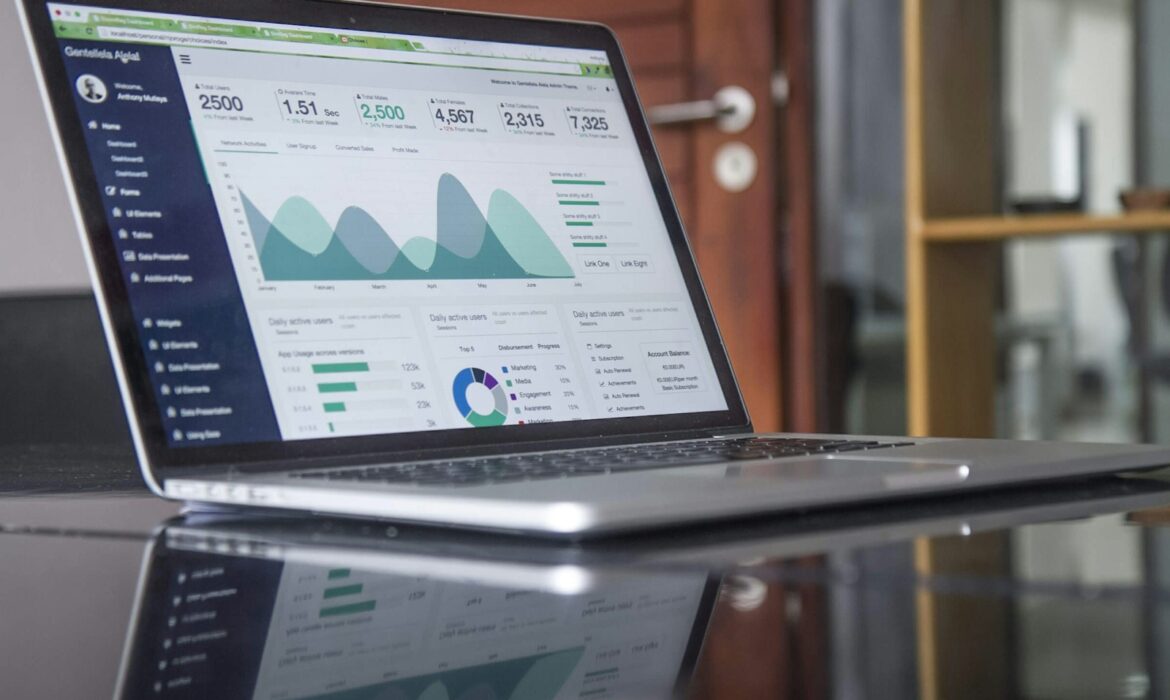
Understanding Social Media Analytics
In the world of social media marketing, understanding and harnessing the power of social media analytics is crucial for success. By diving into the realm of social media analytics, businesses and individuals can gain valuable insights into their online presence and make data-driven decisions to maximize their reach and engagement.
What is Social Media Analytics?
Social media analytics refers to the practice of gathering data from social media platforms and analyzing it to gain insights into audience behavior and preferences (Sprinklr). It involves the collection and analysis of various data points that help measure the performance of social media accounts. These data points include metrics such as likes, comments, shares, saves, mentions, and discussions of the brand or consumer insights (Hootsuite).
By tracking and analyzing these metrics, businesses can gain a deeper understanding of how their social media efforts are resonating with their audience. This information can be used to refine content strategies, optimize engagement, and drive business objectives.
Importance of Social Media Analytics
Social media analytics plays a vital role in the success of a social media marketing strategy. It allows businesses to measure the impact of their social media efforts, identify areas for improvement, and make data-driven decisions. By understanding and interpreting the data, businesses can adapt their strategies to better align with their goals and audience preferences.
Moreover, social media analytics can help gauge customer sentiment, spot trends, and identify potential PR crises before they escalate (Hootsuite). This proactive approach enables businesses to address issues promptly and maintain a positive brand reputation.
Benefits of Social Media Analytics
The benefits of social media analytics are far-reaching. By leveraging social media analytics, businesses and individuals can:
-
Measure Performance: Social media analytics tools allow businesses to track key metrics and create performance reports. These reports provide insights into the success of social media campaigns, content strategies, and overall engagement. They help assess performance, identify areas for improvement, and showcase results to stakeholders and decision-makers (Hootsuite).
-
Understand Audience Behavior: Social media analytics provide valuable insights into audience behavior and preferences. By analyzing data on likes, comments, shares, and other engagement metrics, businesses can gain a deeper understanding of their audience’s interests, preferences, and needs. This knowledge helps tailor content and messaging to resonate with the target audience.
-
Optimize Content Strategy: With social media analytics, businesses can identify which types of content perform best, what topics resonate with their audience, and the optimal posting times. Armed with this information, businesses can refine their content strategy, create more engaging and relevant content, and maximize audience reach and engagement.
-
Drive Data-Driven Decisions: Social media analytics empowers businesses to make informed and data-driven decisions. By analyzing the data, businesses can identify trends, uncover insights, and make strategic adjustments to their social media marketing efforts. This helps allocate resources effectively, optimize campaigns, and achieve desired outcomes.
Social media analytics is a powerful tool that enables businesses to unlock the full potential of their social media marketing efforts. By understanding the definition, importance, and benefits of social media analytics, businesses and individuals can stay ahead of the curve, drive engagement, and maximize their reach in the ever-evolving world of social media.
Key Metrics in Social Media Analytics
When it comes to evaluating the success and effectiveness of your social media efforts, key metrics play a crucial role. These metrics provide valuable insights into the performance of your social media strategy and help you identify areas for improvement. Let’s explore some of the key metrics in social media analytics.
Likes, Comments, and Shares
Likes, comments, and shares are essential engagement metrics that indicate audience interest and interaction with your content. They provide insights into how well your content is resonating with your audience and can help gauge the level of engagement. The more likes, comments, and shares your posts receive, the higher the engagement rate, indicating a positive response from your audience. It’s important to track these metrics to understand which types of content are sparking conversation and generating interest.
Reach and Impressions
Reach and impressions are metrics that measure the potential visibility of your content. Reach refers to the total number of unique users who have seen your content, while impressions represent the total number of times your content has been displayed, including multiple views by the same user. These metrics help you understand the scope and impact of your social media efforts. By analyzing reach and impressions, you can identify which platforms and content formats are generating the most visibility for your brand.
Click-Through Rates (CTR)
Click-through rate (CTR) is a metric that measures the percentage of users who click on a specific link or call-to-action within your social media posts. It indicates the level of interest and engagement with your content. A higher CTR suggests that your content is compelling and effectively driving users to take the desired action. Tracking CTR can help you optimize your content and calls-to-action to improve engagement and drive traffic to your website or landing pages.
Conversions and ROI
Conversions and return on investment (ROI) are crucial metrics that measure the effectiveness of your social media marketing efforts. Conversions refer to the desired actions taken by users, such as making a purchase, signing up for a newsletter, or filling out a form. Tracking conversions allows you to assess the impact of your social media strategy on driving tangible results.
ROI measures the return on investment for your social media marketing activities. It helps quantify the value generated from your social media efforts by comparing the costs incurred to the revenue or other relevant outcomes. Calculating ROI can assist in optimizing your social media budget and identifying the most effective tactics for achieving your business goals.
By monitoring and analyzing these key metrics, you can gain valuable insights into the performance of your social media strategy and make data-driven decisions to enhance your marketing efforts. Social media analytics tools like Hootsuite Analytics, Sprinklr, and other platforms provide comprehensive data and reporting capabilities to help you track and measure these metrics effectively.
Remember, social media analytics is an ongoing process that requires continuous monitoring and analysis to optimize your strategy and achieve meaningful results.
Tools and Platforms for Social Media Analytics
To effectively harness the power of social media analytics, utilizing the right tools and platforms is essential. These tools provide valuable insights and data that can help you make informed decisions and optimize your social media strategy. Let’s explore some popular options:
Hootsuite Analytics
Hootsuite Analytics is a comprehensive social media analytics tool that offers performance data from various social networks in one centralized platform. It is widely used by business owners, social media managers, and marketing teams. Hootsuite Analytics provides easy-to-understand reports, allowing you to track key metrics and measure the success of your social media efforts.
One of the standout features of Hootsuite Analytics is its competitive analysis functionality. It enables you to monitor up to 20 competitors per network and gain valuable insights on their top posts, hashtags, and content formats in your niche. This information can help you benchmark your performance and identify opportunities for improvement. In fact, Hootsuite Analytics was awarded the 2022 MarTech Breakthrough Award for Best Overall Social Media Management Platform.
Another notable feature of Hootsuite Analytics is the Best Time to Publish tool. This feature analyzes your historical social media data and recommends the most optimal times to post based on your unique audience engagement patterns. By posting at the right times, you can maximize your reach and engagement with your audience.
Sprinklr
Another powerful platform for social media analytics is Sprinklr. Sprinklr offers a wide range of features to track and analyze social media data. The platform provides real-time monitoring, sentiment analysis, and competitor analysis, allowing you to gain comprehensive insights into your social media performance.
Sprinklr’s real-time monitoring feature enables you to track mentions of your brand, industry trends, and customer sentiment across various social media platforms. This information is invaluable for understanding how your audience perceives your brand and identifying potential opportunities or issues that require immediate attention.
In addition, Sprinklr offers sentiment analysis capabilities, which allow you to gauge the sentiment behind social media conversations related to your brand. This helps you understand how your audience feels about your brand and identify areas where you can improve customer satisfaction.
Other Social Media Analytics Tools
Apart from Hootsuite Analytics and Sprinklr, there are several other social media analytics tools available in the market. These tools offer a range of features and functionalities to meet different needs and preferences. Some popular options include:
- Buffer Analytics: A comprehensive analytics platform that provides in-depth insights into your social media performance, including engagement rates, follower growth, and post reach.
- Google Analytics: While primarily known for website analytics, Google Analytics also offers social media tracking capabilities. It allows you to track social media referrals, conversions, and other key metrics.
- Brandwatch: An advanced social listening and analytics tool that helps you monitor brand mentions, measure sentiment, and identify influencers in your industry.
- Sprout Social: A social media management platform that includes robust analytics features to track engagement, audience growth, and post performance.
When selecting a social media analytics tool, consider your specific needs, budget, and the platforms you use for social media marketing. Each tool has its own strengths and features, so it’s important to choose one that aligns with your goals and objectives.
By leveraging the capabilities of these tools and platforms, you can gain valuable insights into your social media performance, track key metrics, and make data-driven decisions to enhance your social media strategy.
Using Social Media Analytics for Strategy
When it comes to social media marketing, utilizing social media analytics is essential for developing effective strategies. By leveraging the power of data, businesses can gain valuable insights into their social media performance and make informed decisions to maximize their reach. In this section, we will explore how social media analytics can be used to set SMART goals, track customer sentiment, and identify trends and insights.
Setting SMART Goals
Setting SMART goals (Specific, Measurable, Attainable, Relevant, Time-bound) is a fundamental step in leveraging social media analytics effectively. By defining clear and specific goals, you can track and measure your progress accurately (Hootsuite). For instance, instead of aiming to “increase social media engagement,” a SMART goal would be to “increase Instagram post engagement rate by 15% within three months.”
SMART goals provide a framework for social media strategies, allowing you to align your efforts with specific objectives. By regularly monitoring relevant metrics, such as likes, comments, shares, reach, and conversions, you can evaluate your progress and make adjustments as needed.
Tracking Customer Sentiment
Understanding customer sentiment is crucial for building a positive brand image and maintaining customer satisfaction. Social media analytics can help you gauge customer sentiment by monitoring mentions, comments, and sentiment analysis. By analyzing customer sentiment, you can identify areas of improvement, respond to customer feedback, and address potential issues before they escalate (Hootsuite).
Tracking customer sentiment allows you to identify both positive and negative sentiment trends. By leveraging sentiment analysis tools, you can gain insights into how customers perceive your brand, products, and services. This information can guide your content creation, communication strategies, and customer relationship management efforts.
Identifying Trends and Insights
Social media analytics provide valuable data that can be used to identify trends and gain insights into your target audience. By analyzing metrics such as reach, impressions, click-through rates (CTR), and engagement rates, you can uncover patterns and preferences that inform your content strategy and overall social media approach (Sprinklr).
By identifying trends, you can stay ahead of the curve and create relevant, timely content that resonates with your audience. For example, if you notice an increase in engagement when you share video content, you can prioritize video marketing in your social media strategy. Additionally, social media analytics can help you understand which platforms and content formats drive the most traffic and conversions, allowing you to allocate your resources effectively.
By harnessing the power of social media analytics, businesses can gain a competitive edge and make data-driven decisions. Whether it’s setting SMART goals, tracking customer sentiment, or identifying trends and insights, social media analytics provides a wealth of information that can be used to optimize your social media strategy and achieve your marketing objectives.
Social Media Analytics for Competitor Analysis
To stay competitive in the ever-evolving world of social media, businesses need to keep a close eye on their competitors. Fortunately, social media analytics provides valuable insights that can be utilized for effective competitor analysis. By analyzing competitor content, monitoring engagement and follower growth, and identifying influencers in your industry, you can gain a competitive edge in the social media landscape.
Analyzing Competitor Content
Analyzing competitor content is an essential part of social media competitor analysis. By examining the type of content your competitors are sharing, you can gain insights into their strategies, identify trends, and discover what resonates with their audience. Look for patterns in their posts, such as the frequency, format, and tone of their content. Pay attention to the topics they cover, the visuals they use, and the level of engagement their content receives.
Consider using social media management tools like Hootsuite Analytics or Sprinklr to streamline the process of tracking and analyzing competitor content. These tools provide features that allow you to monitor competitor profiles, track their posts, and gain insights into their engagement metrics.
Monitoring Engagement and Follower Growth
Engagement and follower growth are key metrics to monitor when analyzing your competitors’ social media performance. By assessing the level of engagement their posts receive, such as likes, comments, and shares, you can gauge the effectiveness of their content and identify opportunities for improvement in your own social media strategy.
Additionally, tracking follower growth can provide insights into the success of your competitors’ efforts in attracting and retaining their audience. By understanding how their follower count changes over time, you can identify trends and patterns that may inform your own growth strategies.
Identifying Influencers in Your Industry
Influencers play a significant role in shaping consumer opinions and driving engagement on social media. Analyzing competitor data can help you identify influencers in your industry with whom your competitors are engaging. By examining factors such as follower counts, engagement rates, and collaborations, you can pinpoint influential individuals who have a significant impact on your target audience.
Identifying influencers allows you to explore potential partnerships and collaborations that can amplify your brand’s reach. Engaging with influencers can help you tap into their established audience base and benefit from their endorsement, ultimately boosting your brand’s visibility and credibility.
By leveraging social media analytics for competitor analysis, you can gain valuable insights into your competitors’ strategies, content performance, and audience engagement. These insights can inform your own social media strategy, allowing you to make data-driven decisions and stay one step ahead in the competitive social media landscape.
Measuring Social Media ROI with Analytics
To gauge the success and effectiveness of social media marketing efforts, it is crucial to measure the return on investment (ROI) using social media analytics. By tracking key metrics and analyzing data, businesses can gain valuable insights into the impact of their social media strategies. Here are three important aspects to consider when measuring social media ROI.
Tracking Website Traffic and Leads
One of the primary goals of social media marketing is to drive traffic to a website and generate leads. Social media analytics tools provide valuable data on website traffic originating from social media platforms. By monitoring the number of visitors referred from social media channels, businesses can assess the impact of their social media campaigns and content.
Tracking website traffic can be done using various tools, such as Google Analytics or the analytics features provided by social media platforms themselves. These tools allow businesses to identify which social media platforms are driving the most traffic and which specific posts or campaigns are most effective in attracting visitors.
In addition to website traffic, social media analytics can also help track and measure leads generated through social media efforts. By monitoring and analyzing lead conversion rates, businesses can gain insights into the quality and effectiveness of their social media lead generation strategies. This data can inform future decisions and optimizations to maximize ROI.
Calculating Conversion Rates
Conversion rates are an essential metric in determining the success of social media marketing efforts. A conversion refers to a desired action taken by a user, such as making a purchase, filling out a form, or subscribing to a newsletter. By analyzing conversion rates, businesses can evaluate the effectiveness of their social media campaigns in driving desired actions.
To calculate conversion rates, businesses need to define what constitutes a conversion and set up conversion tracking mechanisms. This can be done through tools like Google Analytics or by utilizing conversion tracking features provided by social media platforms. By comparing the number of conversions to the total number of visitors, businesses can determine the conversion rate and assess the impact of their social media marketing efforts.
Analyzing conversion rates also allows businesses to identify any areas where improvements can be made. By testing and optimizing different elements of their social media campaigns, such as ad copy, landing page design, or call-to-action buttons, businesses can increase conversion rates and improve overall ROI.
Evaluating Social Media Marketing Success
Evaluating the success of social media marketing goes beyond tracking website traffic and conversion rates. It involves assessing the overall impact of social media efforts on the business’s goals and objectives. Social media analytics can provide insights into various metrics, including engagement, reach, impressions, click-through rates, and conversions.
Engagement metrics, such as likes, comments, and shares, help businesses understand how their content resonates with the audience. High engagement indicates that the content is capturing attention and generating interest. Reach and impressions provide information on the number of unique users who have seen the content, allowing businesses to evaluate the effectiveness of their distribution strategies.
Click-through rates (CTR) measure the percentage of users who click on a link or call-to-action within a social media post. A high CTR indicates that the content is compelling and driving users to take further action. By tracking CTR, businesses can optimize their content and messaging to improve engagement and conversions.
Evaluating social media marketing success also involves analyzing the return on investment (ROI). By comparing the costs associated with social media marketing efforts to the generated revenue or other desired outcomes, businesses can assess the profitability and effectiveness of their social media strategies.
By utilizing social media analytics, businesses can effectively measure their social media ROI and make informed decisions to optimize their social media strategies. The data obtained through analytics helps identify areas for improvement, track progress towards goals, and tailor content to the target audience, ultimately maximizing the impact of social media marketing efforts.
- Boost Your Business: Expert Google My Business Ranking Tipsby Freelancertamal●March 1, 2024
- Strategies to Improve Your Website Visibilityby Freelancertamal●February 18, 2024
- Unlocking Success: The Art of Freelance Project Managementby Freelancertamal●January 4, 2024
- Mastering Email Marketing in Rangpur: Secrets to Digital Triumphby Freelancertamal●January 4, 2024










